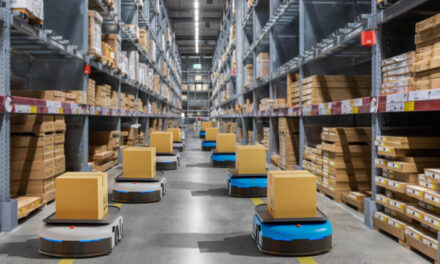 The International Federation of Robotics announces that, in the light of Brexit, and according to results collated by the World Robotics Report in 2019, installations of industrial robots fell in the UK by three per cent, compared the EU’s recent sales, which are up by 12 per cent. Europe reportedly holds the highest level of robot density, with 106 industrial robots fitted per 10,000 employees in a respective manufacturing facility. The UK ranks further behind – 22nd worldwide to be precise – with a density of 85 units, matching the global average.
The International Federation of Robotics announces that, in the light of Brexit, and according to results collated by the World Robotics Report in 2019, installations of industrial robots fell in the UK by three per cent, compared the EU’s recent sales, which are up by 12 per cent. Europe reportedly holds the highest level of robot density, with 106 industrial robots fitted per 10,000 employees in a respective manufacturing facility. The UK ranks further behind – 22nd worldwide to be precise – with a density of 85 units, matching the global average.
Mike Wilson, chairman of the British Automation and Robot Association (BARA), says: “Over many years, the UK has attracted workers from other countries, with businesses preferring to hire people, rather than invest in capital equipment. The consequences of the Brexit vote and subsequent political developments are leading to reduced labour availability, as the many workers who have come over from Eastern Europe are starting to return home. As a result, businesses have to ensure that they use their workforce effectively and find alternative ways of performing tasks for which they have a shortage of staff, robot automation being an obvious solution.”
“Robots play a major role in manufacturing,” says Junji Tsuda, president of the International Federation of Robotics: “There are so many projects. Everybody is engaged in enhancing the capability of robots. We can apply robots in many areas, so everybody will be a winner. When it comes to AI, the developer community is very open and they share the basic logic globally. There is a race for implementation. This implementation has a very close connection with robotics engineering which makes the difference. When it comes to AI for robotics, Japan and Europe remain the major players for robot applications.” For more details, visit: www.ifr.org



